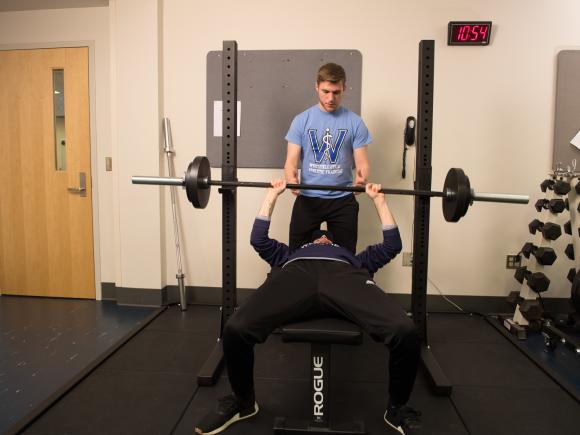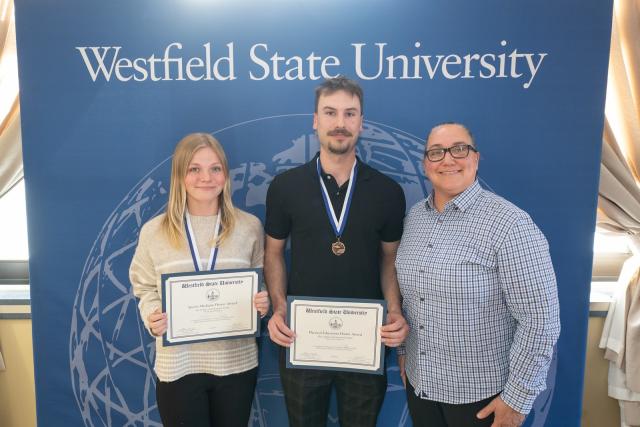The Preventative Care and Physical Activity concentration/specialization prepares students to be engaged citizens through impacting the health of individuals and groups in their communities. Students may complete the program as a concentration in Movement Science, or as a specialization to add to a declared major.
The focus of the Preventative Care and Physical Activity concentration is on preventative health interventions viewed and implemented through the lens of multiple health-behavior models, inter-professional- and team-based leadership and problem solving, as well as health equity. This concentration's integrated approach provides opportunities for students to become health literate themselves, understanding and valuing the many determinants of health, and to become advocates and agents of change for health literacy and health equity in their communities.
All students in the concentration will be held accountable to the applicable policies and procedures outlined in the SMHP Department Manual, including Intermediate and Advanced Standing.
Credentialing
The Preventative Care and Physical Activity concentration is one of the many concentrations in the Movement Science major. All Movement Science majors must complete the shared Movement Science core, totaling 27 credits. The Preventative Care and Physical Activity concentration requires the completion of 18 credits of specified coursework, as well as 18 additional credits of additional approved coursework or completion of a minor towards a focused area. The 18 additional credits for the concentration (or the added minor coursework) is designed to support student-focused work to allow for credentialing in an area selected by the student.
Students in this concentration are encouraged to sit for certain nationally recognized board, licensure, and certification exams related to their credentialing area. Completing either the 18 additional credits or a minor does not guarantee successful completion of board or licensure exams. Students should consult with one of the program advisors to discuss the optimal path for credential certifications and exam preparation. Students may pursue, but are not limited to, the following credential opportunities:
- Certified Health Education Specialist (CHES)
- Physical Activity in Public Health Specialist (PAPHS)
- Health, Food, and Consumer Science MTEL (Massachusetts Teacher Education Licensure for Health Education)
- Comprehensive School Physical Activity Programming (CSPAP)
Your advisor can assist you in selecting your 18 credits worth of additional coursework, or help you choose and declare a minor, to align with specific credentialing. Again, other credentialing opportunities may be available that are not listed here.
The settings, job titles, and responsibilities of each of the certifications/credentials can be very similar. Specific pathways, based on individual student strengths and interests, should be discussed with an advisor. The skill sets developed throughout this program, such as teamwork, leadership, professionalism, inter-professional communication, and systems-thinking, are all highly desired skills in most industries, and are transferable to many fields. With these certifications, students may look forward to working in the following settings: schools, hospitals, doctor's offices, private businesses, insurance companies, local/state/federal government agencies, and non-profit organizations (bls.org; nchec.org; shapeamerica.org). Of students enrolled in similar programs nationally, approximately 50% are employed in healthcare or social assistance settings, and 20% are employed in state or local government (nchec.org).
In these settings, students may hold one or more of the following job titles: health educator, health coach, health literacy program coordinator, health media consultant, health journalist, health information specialist, prevention specialist, patient educator, employee wellness coordinator, grant writer, health advocacy coordinator, director of youth or adult physical activity programming, and health services coordinator, among others (nchec.org; shapeamerica.org).
In these positions, students will typically have some combination of the following responsibilities:
- Educating individuals and populations to influence health behavior as well as the environments that impact health. The clear focus is on prevention for healthier individuals and communities.
- Most public health settings require students to build partnerships, advocate for physical activity programs and strong public health, and promote safe spaces for physical activity, with a mission of health equity. (acsm.org)
- Additionally, students working in healthcare settings may educate patients regarding their care and how the health system functions, create incentive programs to use health services, partner with and refer to appropriate health providers, and consult regarding barriers to health.
All statistics were provided by the following websites: acsm.org; nchec.org; shapeamerica.org; bls.org.





